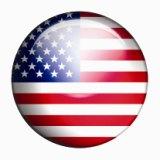Updated Final Guidance for MDDS, Mobile Medical App Regulation in the US
有任何问题?向我们的专家获取相关信息
联系我们2015年 2月 6日
The US Food and Drug Administration has published final guidances on the agency’s regulatory approach to medical device data systems (MDDS) and mobile medical technologies that pose low risk to patients and users.
 US regulators had already indicated in draft guidance that they would not enforce compliance to regulatory requirements applied to MDDS, medical image storing devices and medical image communication devices not only because of these products’ low risk profiles, but also their importance in the development of digital health technologies. The final FDA guidance reaffirms that approach.
US regulators had already indicated in draft guidance that they would not enforce compliance to regulatory requirements applied to MDDS, medical image storing devices and medical image communication devices not only because of these products’ low risk profiles, but also their importance in the development of digital health technologies. The final FDA guidance reaffirms that approach.
Mobile apps versus mobile medical apps
In its final guidance for mobile medical apps, the agency reiterates plans to actively regulate only certain subsets of mobile apps that actually qualify as medical devices. For the majority of mobile apps, which pose little risk to users, the FDA does not plan to enforce regulatory requirements. Only those mobile medical apps that do function as medical devices—referred to by the agency as mobile medical apps—will be more actively regulated in the US.
(The FDA had originally issued final guidance on mobile medical app regulation in September 2013, but updated that guidance in conjunction with the agency's final guidance for MDDS oversight.)
The FDA guidance distinguishes between functionality and platform in determining whether a mobile app qualifies as a medical device. This distinction is significant because it appears to exempt products such as smartphones and tablets from FDA oversight; oversight would apply instead to mobile apps accessed via smartphone or tablet that perform medical device functions. Furthermore, the FDA plans to oversee only those mobile medical apps “whose functionality could pose a risk to a patient’s safety if the mobile app were to not function as intended.”
What is a mobile medical app?
Many mobile app developers have wondered whether their products qualify as medical devices—and comply with FDA medical device regulations. The final guidance does provide some specific examples of which apps would face regulatory oversight:
- Apps that connect to medical devices in order to control the device, or for active patient monitoring or medical data analysis
- Displays of medical images directly from Picture Archiving and Communications System (PACS) servers
- Remote displays of bedside patient monitors
- Apps controlling inflation and deflation of blood pressure cuffs
- Apps controlling delivery of insulin from an insulin pump
- Apps that transform mobile platforms into regulated devices by using attachments or other functionalities similar to those found in regulated devices
- Attachment of a blood glucose meter to a mobile platform to function as a glucose meter
- Attaching electrocardiograph electrodes to a mobile platform to measure and store ECG signals
- App that uses built-in meters on a mobile platform to collect motion data to monitor sleep apnea
- App that uses sensors on a mobile platform to create an electronic stethoscope function
- Apps that perform patient-specific analysis, diagnosis or treatment recommendations
- Apps using patient-specific data to calculate dosage or dosage plans for radiation therapy
- Computer Aided Detection (CAD) software for processing medical images
- Software for radiation therapy treatment planning
The list of mobile apps for which the FDA has no plans to enforce medical device regulatory requirements is much longer. Even in many instances where apps do qualify as mobile medical apps, US regulators will use “enforcement discretion”—that is, no enforcement—because those apps pose minimal risks to users and patients.
Among the many apps that will not warrant active FDA oversight are:
- Apps providing or facilitating supplemental clinical care wherein patients manage their own health
- Apps that coach patients to manage diseases or conditions such as hypertension or diabetes
- Apps providing simple tools for organizing and tracking patient health information
- Apps that allow patients with conditions or diseases such as obesity, anorexia or diabetes to log or track measurements and share that data with their healthcare providers
- Apps used to access information regarding patients’ conditions or treatments
- Apps that use patient diagnoses to provide doctors with best practice treatment guidelines
- Apps serving as drug-drug interaction look-up tools
- Apps to help patients document or show potential medical issues
- Videoconferencing portal apps intended specifically for medical uses between patients and healthcare professionals
- Apps designed for medical use that use a mobile device’s camera in order to document or transmit pictures from patients to healthcare professionals
- Apps for simple calculations used in clinical practice
- Apps to calculate Body Mass Index, mean arterial pressure, APGAR scores, NIH Stroke Scales and Total Body Water measurements
- Apps allowing users to interact with health record systems
- Apps that qualify as Medical Device Data Systems
Additional examples of which mobile apps the FDA plans to regulate as medical devices as well as apps that either do not qualify as medical devices or do not warrant regulatory enforcement are available in Appendices A, B and C of the guidance.
作者
- Stewart Eisenhart